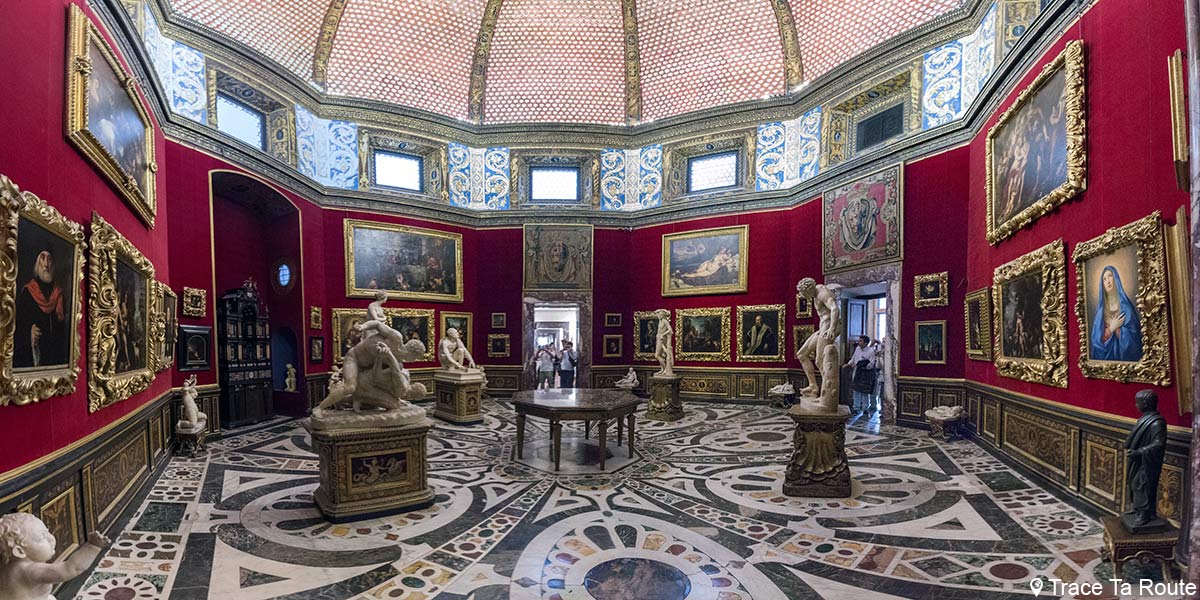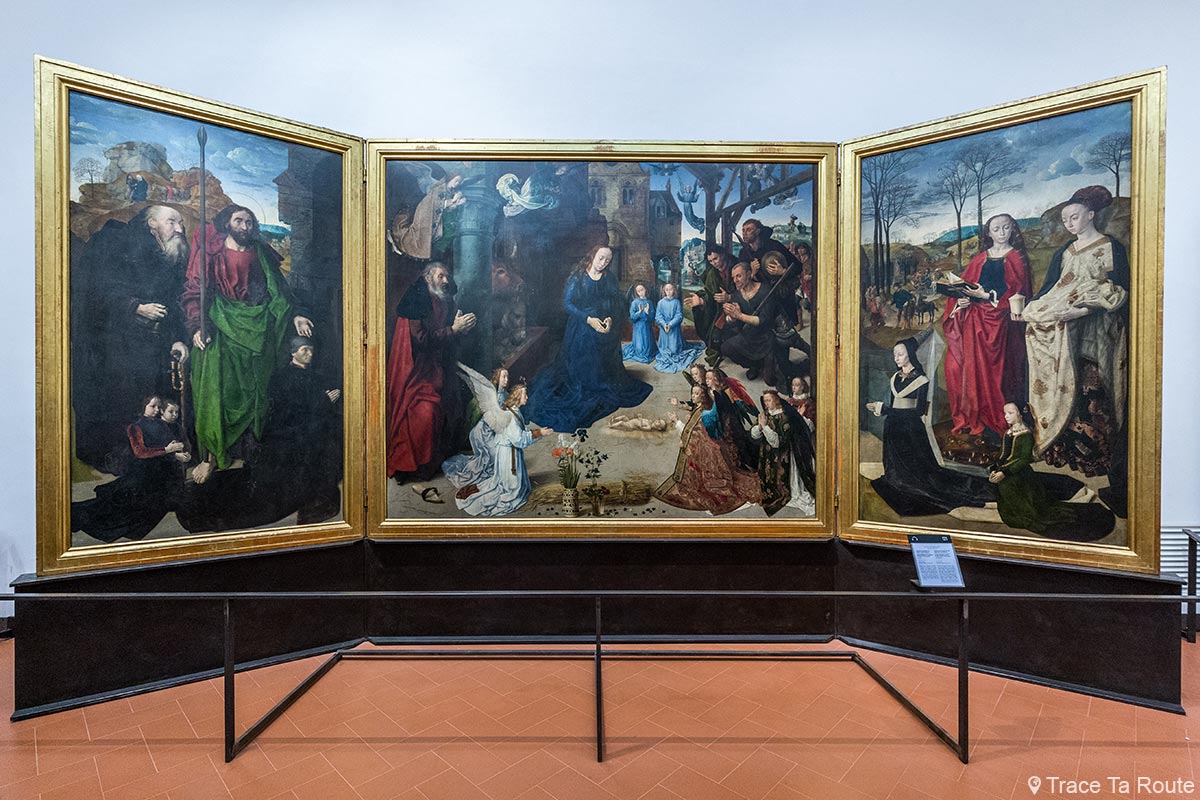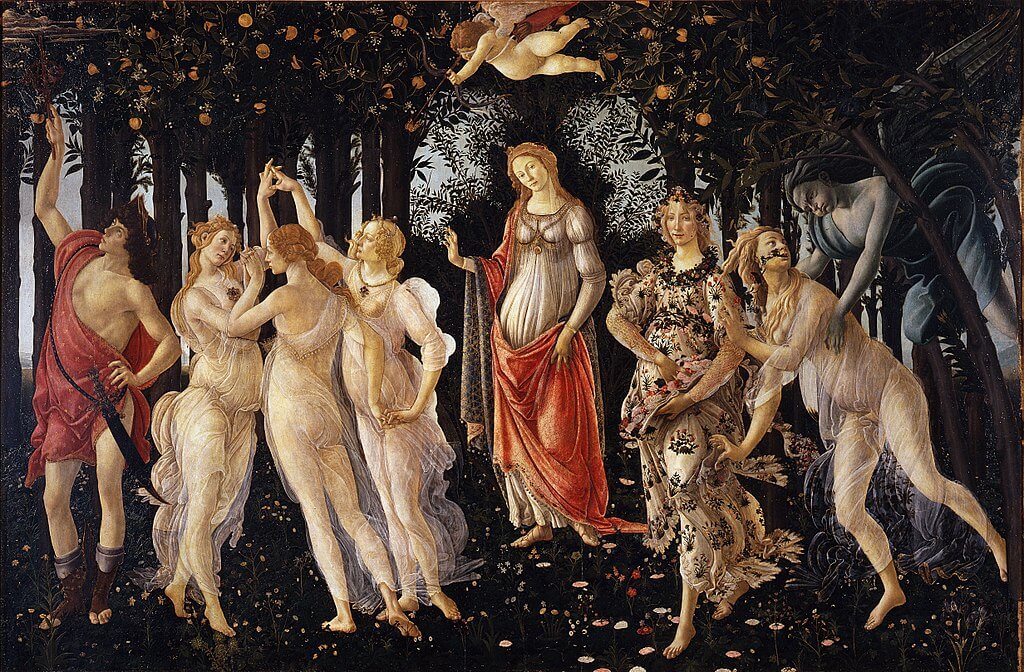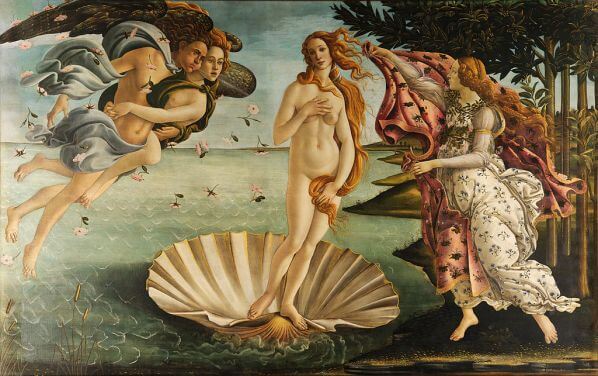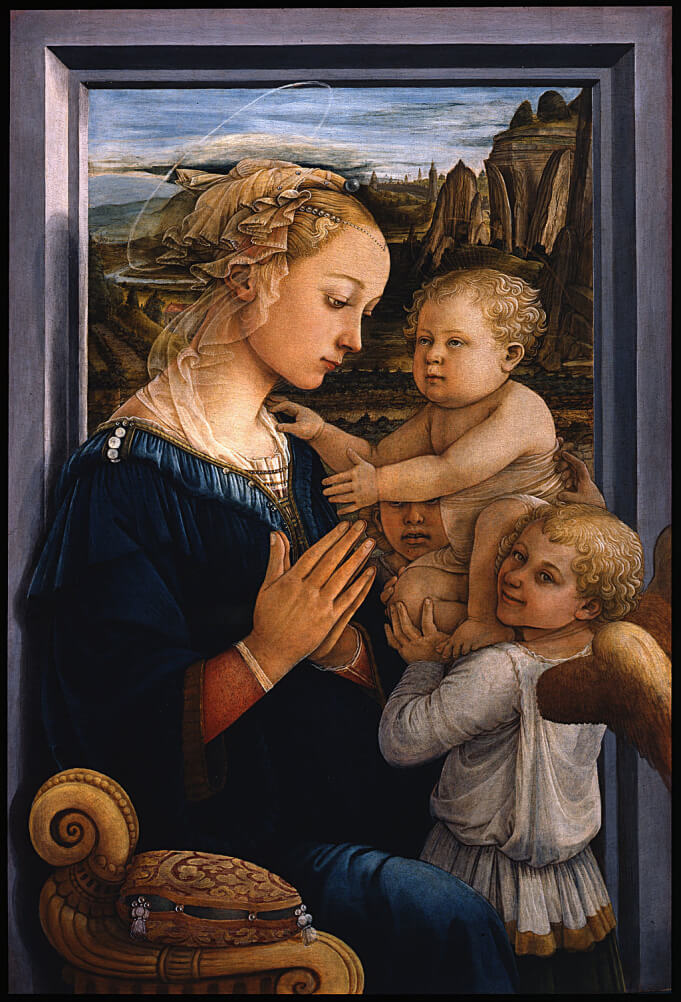
BOTTICELLI, UNE FIGURE DU STYLE.
L'exposition du musée du Luxembourg consacrée à Sandro Botticelli, qui s'est ouverte le 1er octobre, contraste par sa modestie avec le battage médiatique qui a accompagné son ouverture (Libération du 3-4 janvier). En réalité, elle ne compte que 21 peintures et quatre dessins attribués à l'artiste, né en 1445 et mort en 1510, pratiquement sans avoir quitté Florence. Naturellement, les tableaux qui font sa célébrité, qui ne peuvent quitter la cité italienne, comme la Naissance de Vénus ou le Printemps, sont absents des cimaises, ce qui suscite parfois la déception de visiteurs qui ont dû patienter une ou deux heures dans le froid. Et qui ont prêté foi à une campagne de promotion agressive, soutenue notamment par des numéros spéciaux de magazines grand public, dans lesquels il est impossible de savoir quelles oeuvres l'exposition présente véritablement. Cela dit, pour qui est monté à l'assaut des cohortes des Offices à Florence, les conditions de visite seraient plutôt meilleures, d'autant que les commissaires, le regretté Daniel Arasse, disparu le 14 décembre, et Pierluigi De Vecchi, ont su mettre la scénographie en sourdine.
Rêverie mélancolique. L'exposition n'en compte pas moins des oeuvres importantes, dont Pallas et le Centaure, tableau mythologique montrant une jouvencelle soumettant un centaure, la poitrine avantageuse sous un voile orné des symboles des Médicis : les trois anneaux et les diamants, symboles d'invincibilité. Le sens de cette scène reste un mystère. Le titre est venu plus tard et la jeune fille ne porte aucun des attributs de Pallas. Il pourrait s'agir d'une allégorie à la gloire de Laurent Médicis, dit le Magnifique. Ou encore, d'une fable morale sous l'influence des théories alors à la mode à Florence, qui prétendaient concilier les dogmes de l'Evangile avec l'Amour et la Raison platonicienne. Il est en tout cas acquis que cette peinture est de Botticelli, contrairement à d'autres, toujours discutées. La stylisation du corps allongé, l'apparentement des poses avec des pas de danse, la silhouette languissante, le regard perdu dans le vague et la gravité triste de la nymphe introduisent cette rêverie mélancolique si propre à l'artiste.
«A tempera». Les contradictions de Botticelli se lisent dans cette toile. Tôt, il devient un peintre «à l'ancienne». Résistant à la peinture à l'huile, il continue de travailler a tempera (liant les pigments au blanc d'oeuf), ce qui confère un charme particulier à ses tonalités, tout en aplatissant ses figures. Il inscrit ses corps dans le tracé vigoureux de la ligne, sans faire ressortir les modelés par le clair-obscur. Tout à ses ondulations, l'artiste en néglige les proportions de l'anatomie. Ni le paysage, ni les lignes de fuite de la perspective ne le passionnent. A l'inverse d'un Léonard de Vinci, il laisse ainsi le style l'emporter sur l'observation. Et se perd dans la poésie idyllique d'une époque éphémère de la cité florentine.
Souffle intérieur. L'oeuvre la plus vibrante de l'exposition est la Calomnie. Un homme, nu est traîné par des femmes voluptueuses qui ne sont autres que la Calomnie, la Perfidie et la Tromperie. L'Ignorance et la Suspicion chuchotent, entourant un juge aux oreilles d'âne. Le Remords scrute la Vérité, qui se tient en retrait. Organisée en mouvement latéral, la composition est un chef-d'oeuvre de virtuosité. Certains tableaux à épisodes, associés à cette ligne si caractéristique, pourraient ainsi faire penser au mode de construction de la bande dessinée. Dans le dernier texte qu'il a signé, Daniel Arasse souligne ainsi chez cet artiste l'usage de la surface, permettant de faire passer un merveilleux souffle intérieur.
Botticelli, de Laurent le Magnifique à Savonarole. Musée du Luxembourg, 19, rue de Vaugirard, Paris VIe. Jusqu'au 22 février. Catalogue (Skira) 39 euros Tél. : 01 42 34 25 95. www.expobotticelli.comhttps://next.liberation.fr/culture/2004/01/06/botticelli-une-figure-du-style_464224
Where? Room 10-14 of the Uffizi Museum
When? Between 1477 and 1482 Commissioned by? Lorenzo de’ Medici as a wedding gift to his cousin Lorenzo di Pierfrancesco de’ Medici What do you see? This painting is full of allegories (hidden meanings), which leads to much debate on how to interpret the painting. In the meadow, you can see hundreds of different flowers. The blue figure on the right is Zephyr, the god of the west wind. Zephyr is chasing the nymph Chloris, who is associated with flowers and spring. Zephyr’s breath turns Chloris into the woman with the dress decorated with flowers (who is thought to be the goddess of Spring, called Flora). The central figure in the middle is Venus. To the left of Venus, the three Graces (Charites in Greek) are dancing. The Graces are minor deities in Greek mythology. To the left of the Graces is Mercury (Hermes in Greek), the messenger of the Greek gods, who is scattering the clouds with his staff. Some people say that Mercury may be modeled after Lorenzo de’ Medici who commissioned this painting. On top on Venus is Cupid (her son) aiming his flaming arrow at one of the Graces. Backstory: The painting only got his name, La Primavera in 1550 when Giorgio Vasari saw the painting. This painting is also known as the Allegory of Spring ('primavera' is Italian for 'spring'). While many interpretations have been given to the painting, a popular interpretation is that the painting is inspired by a story from the poet Ovid. In his book Fasti (Amazon link to the book), the nymph Chloris is naked and attracts the first wind of the spring, which is represented by Zephyr. When Zephyr captures her, flowers sprang from her mouth and she turns into the goddess Flora. After Botticelli completed the painting, it was placed in the summerhouse of the Medici family, where would hang next to The Birth of Venus which Botticelli completed a few years later. Symbolism: Venus represents the goodwill (humanitas) and divides the spiritual values on the left from the material values on the right (the earthly desires shown by Zephyr). Notice that Cupid is blindfolded while aiming his arrow on one of the Graces. This is a reference to the saying that love is blind. In the background of the picture, you can see orange trees, which are a symbol of the Medici family. Venus stands in front of a myrtle bush (the dark leaves behind her), which is a sacred plant for her as it was the first plant she used to cover herself when she arose naked from the sea. The Graces on the left and the right are wearing expensive jewelry in the colors of the Medici family. Some people believe that each of the flowers symbolizes a unique message. At least for some of the flowers the message is clear. For example, the strawberries in the crown of Flora represent seduction and the roses in her hand symbolize love. Finally, the city of Florence is named after the goddess Flora (which is Latin for ‘flower’). Who is Venus? Venus is the Roman goddess of love, beauty, sex, fertility, prosperity, and desire. Venus is also known in the Greek mythology as Aphrodite. Venus and Mars are the parents of Cupid. In art, Cupid is often depicted together with his mother, Venus. Why Venus? Nudity was the natural state of Venus, which provided a good excuse to include nudity in an artwork. This was an important reason for her popularity in Renaissance art. Whereas in this painting Venus is still dressed, this will quickly change. A few years later Botticelli painted The Birth of Venus in which she is already largely naked.
Who is Botticelli? Sandro Botticelli (1445-1510) was a painter who belonged to the Florentine school of painters. The name Botticelli means “little barrel”. He got this name because people described his brother as “fat like a barrel”. Botticelli was initially trained by his brother to become a goldsmith, but at the age of 14, he became an apprentice to the successful painter Filippo Lippi (1406-1469), known from the painting Madonna and Child with Two Angels. Later in his life, Botticelli became a mentor to both Leonardo da Vinci and Michelangelo.
Fun fact: The painting contains over 500 individual flowers and between 170 and 200 different varieties. Most of these flowers were growing in the spring around Florence. Botanical experts are already inspired for centuries by these flowers. They have been able to identify about 130 flowers, including daisies, forget-me-nots, jasmine, lilies, and violets. For the remaining flowers, there is quite some debate on whether these are fantasy flowers created by Botticelli or real flowers that existed in 15th century Florence but are now extinct.https://www.tripimprover.com/blog/la-primavera-by-sandro-botticelli
=====================================================
|
BLOG DESPRE MUZEUL UFIZZI, FLORENTA
excelente ilustratii: https://www.trace-ta-route.com/musee-galerie-des-offices-florence-italie/
